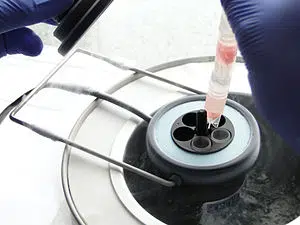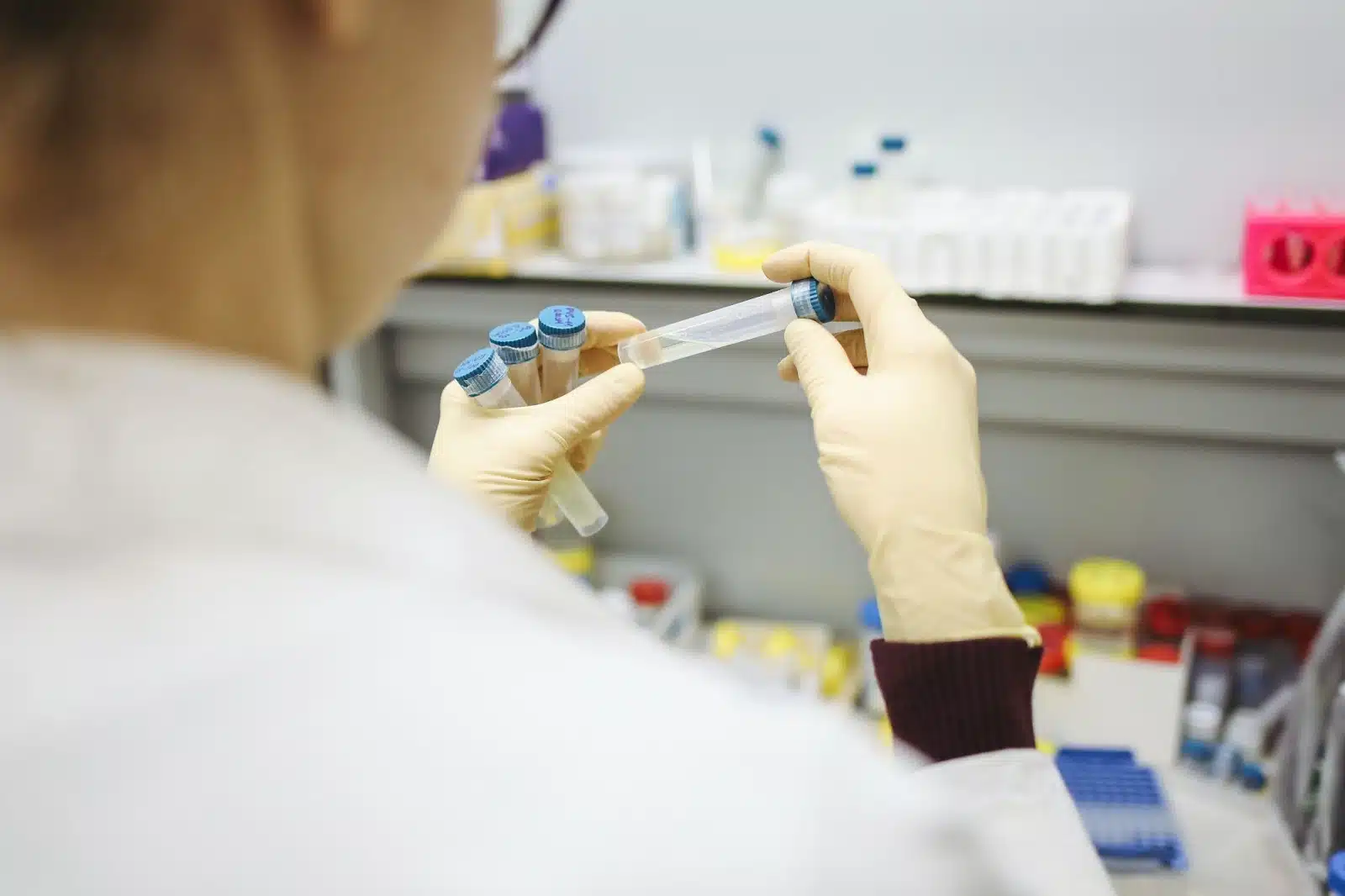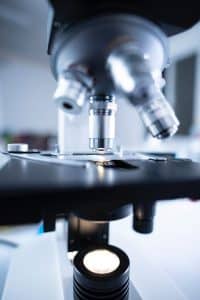Generally speaking, collecting and preserving biologic samples for advanced genetic manipulation and scientific research often requires a collection of ultra-low temperature devices to store and slow bioprocessing within blood and tissue specimens. This ultimate mission for sample collection and DNA preservation is necessary to study a specimen’s population.
Although biological specimens are collected for molecular study and clinical research, preservation can also be utilized to understand biospecimen science. The preservation process of animals, skin, or fluid for long-term storage requires specific collection, statistical analysis, and examination procedures.

According to loris-conservation.org, Wobeser (1994 b) recommends that the collector of samples “first contact the person(s) who do the analyses and establish the type and number of samples or specimens and the precise methods of collection and preservation required.” This article on preserving DNA samples mentions that freezing may be a suitable preservation method for specific specimens but can be harmful to others, like the historical examination of tissues.
Other general considerations from the article include understanding that not all buffers will yield living agents for identifying an isolated disease. Additionally, the process of dry ice cooling may inactivate pathogens. Dry ice storage may lead to invalid results during the sample analysis process. For accurate hypothesis testing, freezers should be designed to provide accurate storage temperatures resulting in accurate analysis results. When there is limited access to required cryogenic storing equipment, Stirling Ultracold can provide preliminary preservation for a wide range of biologic materials.
LEARN MORE ABOUT TISSUE TREATMENT STORAGE
General Rules
Cooling & Refrigeration (Cryogenic and ULT Storage)
Biological materials must be preserved at a specific temperature over a particular time. Generally, stored items over short periods need to be stored frozen for long periods or at refrigeration temperature for quick use. Although some shipping containers use dry ice for temperature management, Stirling Ultracold’s ultra-low chest freezer is perfect for storing specimens in nearly any use case. Insulated cold chain shipping containers often rely on the combination of phase change materials and high-grade insulation to thermally protect and transport temperature-sensitive biologic products from point of manufacture to patient. For ultracold storage requirements, dry ice is often used as the phase change material because it sublimates at -70°C. However, phase change materials only cool for a short period of time, so portable freezers like Stirling’s ULT25NEU should be used when long-term ultra-low temperature storage is required.
Additional limitations of a phase change material like dry ice is that the container cannot be airtight because dry ice sublimation results in expanding gas and increased pressure. If the pressure is not ventilated, airtight dry ice containers could result in a miniature explosion.
Specimens that require storage for skeletal preparation generally need a storage temperature range -10ºC to -40ºC; select a laboratory ultra-low freezers that can store items within a wider temperature range like -20ºC to -80ºC.
Freezing entire samples should be avoided if histopathology is necessary “because it causes numerous artifacts.” Because storing at shorter periods does not require any amplification of treatment, immediate preservation of DNA samples may be the most straightforward process. If samples need to be stored for long periods, the sample must be stored in an ultra-low temperature freezer like those from Stirling Ultracold.
Drying
Air-drying is recommended for specific stomach samples stored.
Desiccants
Dry samples need to be kept from humidity with additional silica storage. As the sample absorbs water the bioproduct can be regenerated as they are more tolerant of heat. The use of protective gear like masks and gloves is recommended for handling dry samples and disposal of hazardous waste.
Rice can also absorb humidity when silica is not readily available. Rice can keep samples dry for short periods. Rice can also be regenerated for desiccation. Rice does not change externally under humid conditions, but molecular weight can determine how much moisture is absorbed by the rice.
Chemical Preservation
Chemicals can also store and preserve tissue samples and specimens for examination. Chemicals should not be used to preserve samples as preparation in skeletal material, as microbial examinations should not be stored through chemical channels. Chemical preservation can discolor specific materials and soft tissues after prolonged immersion.
Preserving substances in alcohol can be used as a long-term storage method when samples have previously been stored in formalin, as alcohol does not harden tissue. Animals can be stored and preserved in alcohol; however, the intestines of said animal need to be removed before alcohol storage.
Transport Biological Samples
Containers cannot contain any leakage when either fresh or frozen tissue samples are being transported. According to Wobester (1994), hazardous goods regulations “must be considered to avoid delay or refusal by the carrier.”
Chemically stored specimens can be removed and stored in soaked towels for shipping. However, they must be stored in leakproof containers required for shipping.

Required Permits
Any sample taken invasively, such as blood or tissue samples, must follow specific laws in the state of such experimentation. However, hair samples may be collected non-invasively.
Permits and required process measurements must be considered and adhered to before shipping samples. Biological tissue samples from endangered specimens may require special permits in the country of origin and must adhere to any required disease control permits. Always contact an examining laboratory before shipping a specimen.
Tissue Preservation
According to loris-conservation.org, “In carcasses of rare species, preservation of organs in situ for anatomical studies may be helpful, with only small samples taken out for examination, causing as little disturbance as possible.
According to labtestsonline.org, tissue samples can be collected through a biopsy using methods including:
- Needle Biopsy – Needles are inserted into the site, and cells are withdrawn using a syringe. A needle biopsy requires little to no recovery time on a specimen; only a slight discomfort may be experienced post-biopsy.
- Excisional Biopsy – A small incision is made, and a portion of tissue is acquired by cutting some of the sites. A need may be inserted to guide the researcher to an appropriate site for sample DNA extraction. Excisional biopsies are “usually performed in a hospital operating room.” Often, a general anesthetic is used to keep a patient comfortable. A recovery period of a couple of hours may be required when used.
Tissue samples for examination such as bacteriology need to be taken if a necropsy is completed to identify health complications. Such samples can be taken in normal and abnormal areas of the specimen. To acquire a tissue sample, it is recommended that samples are taken no thicker than 1 cm but large enough to hold a few areas of tissue abnormalities. For small animals, “entire organs instead of samples may be collected.”
Tissue preservation can be completed using ethanol. Ethanol concentration in preservation can affect the quality of samples. Ethanol is easy to use and preserves DNA in areas where “elevated ambient temperature” occurs for an extended period. However, researchers should note that ethanol can be flammable, making ethanol a possibly hazardous preservation method.
However, damaging specific samples must be avoided. For example, compressing samples with forceps can mechanically damage the original sample. When conducting DNA analysis through tissue samples, “the AZA Prosimian Taxon Advisory Group (2002) recommends storage of samples of heart, skeletal muscle and liver” to be contained in frozen, plastic bags. Stirling Ultracold’s ultra-low chest freezer can be utilized to store tissue samples from around the world into an ultra-low temperature chest for easy transport.
Liquid Preservation
Small amounts of blood and liquid can be collected from an open body cavity to detect viral, bacterial, and blood RNA, DNA quality, DNA degradation, genomic DNA, or antibodies on pathogens. To acquire a sample, organs must find contact with a filter paper. Blood spots can be dried at room temperature or stored in sealed bags to be dried in an ultra-low temperature freezer. It is recommended that silica gel be added to plastic bags stored using dry containment methods.
In serology, serum or plasma can be separated from blood cells and then refrigerated in ultra-low temperature freezers until transported into a laboratory. Plasma and blood can be collected and stored in temperatures ranging from -20ºC to -80ºC or left out for 30 minutes and centrifuged for 20 minutes.
If a centrifuge is not easily accessible, plasma and blood can be obtained “by letting the clot of blood cells settle.” When the extraction of blood in live or dead animals with no clotted blood occurs, said blood could be placed into a tube until clotting occurs. Once clotting is completed, the tube can be removed with the clot attached.
When analyzing DNA, blood samples can be stored to preserve DNA for long periods under ultra-low freezer conditions.
Other Bodily Preservation
If a specimen is found in the wild, collecting contents for analysis outside of tissue and blood may also be helpful. Examining stomach content may not be sufficient. Stomach content can be preserved through chemical processes or in alcohol. Additionally, an entire alimentary tract can be preserved in chemicals through the injection of formalin to be used in later analysis.
Cryogenic Sample Preservation
 Storing tissue samples at low temperatures is used to extend the viability of preserved samples. Although many samples are contained at a temperature of -80ºC, it is crucial to understand that temperatures associated with metabolic activity will not cease – only slow down. The reduction of sample temperatures through cryogenic preservation assures a safe channel of preservation.
Storing tissue samples at low temperatures is used to extend the viability of preserved samples. Although many samples are contained at a temperature of -80ºC, it is crucial to understand that temperatures associated with metabolic activity will not cease – only slow down. The reduction of sample temperatures through cryogenic preservation assures a safe channel of preservation.
The temperature range for material stored in sample tubes is anywhere from -80ºC to -100ºC. There are many associated risks to tissue storage systems when samples are stored in dry ice:
Storage in dry ice places sample tubes at risk of being flooded with carbon dioxide when a tube is retrieved at room temperature. As stated previously, this may pose a risk of explosion.
With dry ice storage, there is a potential risk for cross-contamination from viruses that retain inactivity after being suspended in dry ice.
Collecting Laboratory Tissue Samples
Modern technology allows testing on various samples to be collected in the field from various specimens. Samples can be obtained as a specimen naturally eliminates them. Others can be acquired from a specimen’s orifices. For some, “minor surgery and anesthesia give the health practitioner access to the required sample.”
It is common for tests to be performed on more than just one sample type. Although tissue samples are typical, blood and other bodily samples can also be collected, preserved, and stored using Stirling Ultracold’s ultra-low temperature freezers. For example, blood glucose tests can be used to diagnose individuals with diabetes and monitor glucose regularly. Sometimes, other bodily samples and blood can be acquired for HIV antibody testing.
Samples from tissue can be obtained from various body sites on a specimen. Depending on the site, the time required to perform a tissue biopsy can vary.








